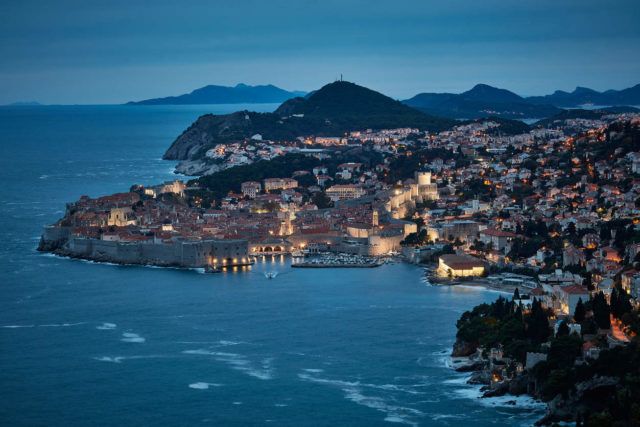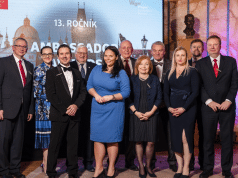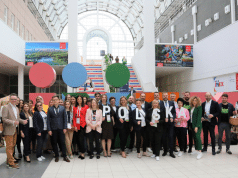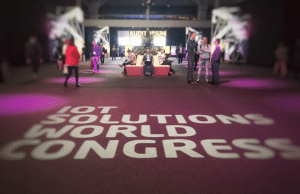
“Ten years ago, when we started preparing the congress travelogues, we couldn’t possibly have foreseen that our methodology for evaluating destinations would have become such an important reference point for meeting planners. As of today, we have published 76 travelogues of various meeting destinations, all based on hard graft and solid field work. Our unflagging enthusiasm for this has demonstrated that we have been setting quality standards that are also being recognized by the wider international industry public through the Meetings Star Awards.”
– Gorazd Čad, Editor in Chief
Congress travelogues, or Meetologues, have become a firm reference for event organisers in selecting destinations over the past decade, mainly because of their sound logic and the benefits that they bring to all parties.
On the initiative of individual destinations that have participated in the MTLG project, we have now prepared a new categorization of meeting destinations. The primary reason we have done this is to ensure the clarity and comprehensibility of the individual categories; the new categorization involves a combination of criteria and the basis for the classification of destinations into four classes is based on the full range of the index and total scores that fall within it.
The results of this new categorization are presented in detail below. It highlighted that, depending on the supporting capacity, destinations can be divided into four categories that are framed based on the maximum number of participants that can be accommodated without encountering any major logistical turmoil or complications.
M MEETING DESTINATIONS
Destinations that can host up to 1,200 congress attendees
This is probably the most heterogeneous category and the one for which the general conclusion is that it is dominated by regional centres and major tourist cities. The congress offer here is mainly based on the offer of local congress hotels and smaller convention centres. The capacity of listed destinations is therefore up to maximum of 1,200 congress attendees. All of the cities in this category have great potential for further development, which will be determined by additional investments in infrastructure.

DUBROVNIK, Croatia
MTLG INDEX: 295

LVIV, Ukraine
MTLG INDEX: 293
KLAGENFURT , Austria
MTLG INDEX: 286

TIRANA, Albania
MTLG INDEX: 285

GRADO, Italy
MTLG INDEX: 274

SPLIT, Croatia
MTLG INDEX: 267
TRIESTE, Italy
MTLG INDEX: 259

VILLACH, Austria
MTLG INDEX: 256
PODGORICA, Montenegro
MTLG INDEX: 245

SCHLADMING, Austria
MTLG INDEX: 245

PORTOROŽ, Slovenia
MTLG INDEX: 244

BUDVA, Montenegro
MTLG INDEX: 244

OPATIJA, Croatia
MTLG INDEX: 242

ROVINJ, Croatia
MTLG INDEX: 236

POREČ, Croatia
MTLG INDEX: 230

MARIBOR, Slovenia
MTLG INDEX: 212

ŠIBENIK, Croatia
MTLG INDEX: 208

UDINE, Italy
MTLG INDEX: 201

SUBOTICA, Serbia
MTLG INDEX: 199
BLED, Slovenia
MTLG INDEX: 198

PULA, Croatia
MTLG INDEX: 198

ZADAR, Croatia
MTLG INDEX: 196

KOSICE, Slovakia
MTLG INDEX: 191
MTLG 2017 CATEGORIZATION
The complexity of the meetings industry means there are many possible variables that can contribute to defining the ‘size’ of a destination. We have been looking for those that are frequently considered to be closely connected and interdependent. This aspect of the defining criteria process necessitated a review of existing literature, which is quite limited in that field and is heavily reliant on the statistics prepared by the international association ICCA, which focuses on recording the number of association meetings and their participants at a destination. Our pillar capacity of meeting estinations were calculated based on criteria that were defined with the help of leading experts from various destinations and are as follows:
MTLG BENCHMARK
The entire methodology of our work had already been upgraded previous year with a system of benchmarking that is carried out for each individual congress destinations, under the name MTLG BENCHMARK.
With our complete methodology we have saved you a lot of your valuable time that would otherwise have been spent in comparing yourself with your main competitors.
Our process is conducted at two different levels:
1. DESTINATION EVALUATION (following the congress MTLG’s methodology)
At this stage destinations are evaluated on all the criteria that are covered in our methodology, including 63 competitive criteria. Based on the destination evaluation a comparative matrix is prepared, which is the basis for the workshop performance of the second stage.
2. BENCHMARK WORKSHOP (with key stakeholders at the destination)
The workshop is designed to evaluate the competitive strengths and weaknesses of a destination and provide the exchange of good case studies in regard to its the further development.
We are confident that our objective evaluation will help event organisers and at the same time allow destinations to implement the further improvements required to overcome their comparative disadvantages.














